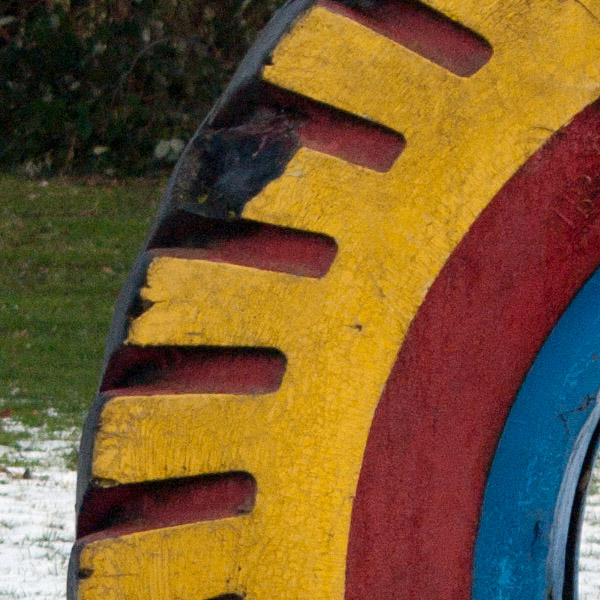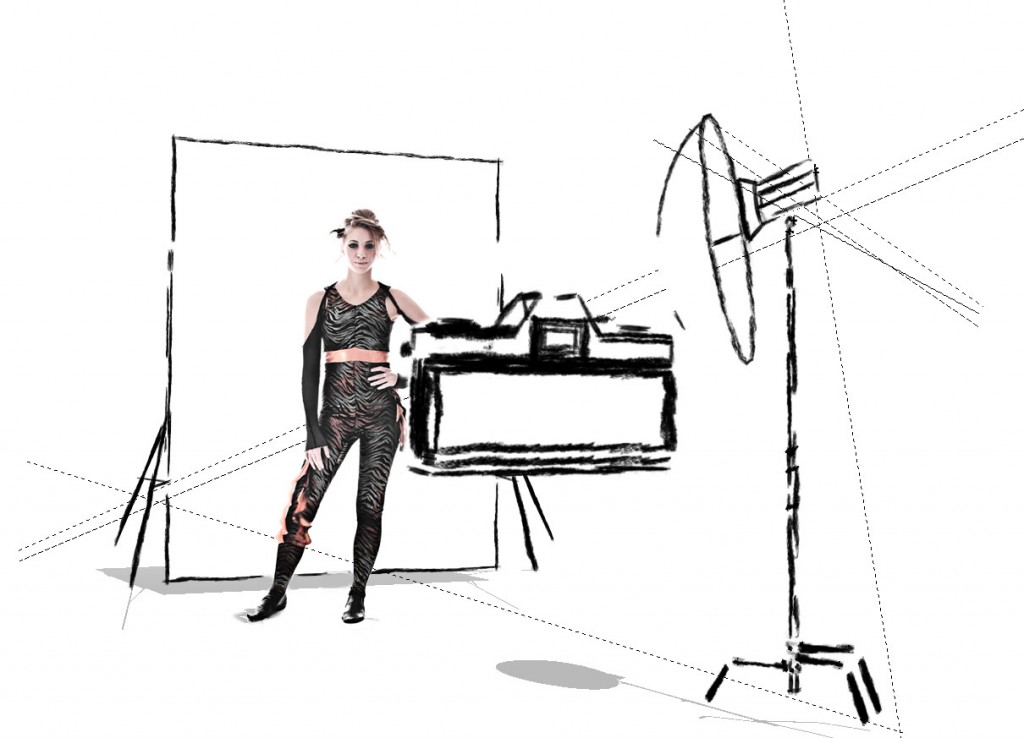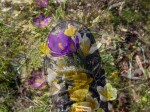Aug
4
2014

Pentax has included the ability to do multiple exposures with their DSLR’s and some other digital cameras all the way back to 2003’s *ist D. In fact my Z1p film camera from 1994 allows up to 9 multiple exposures but it really takes the Q to make it this much fun. The Pentax Q multiple exposure mode takes 4 button clicks to access through the menu but once you are there it brings you back to the same spot after you have made one so its easy to keep experimenting. With these images I’ve chosen to only do two exposures but up to 9 are possible. After you take the first image that picture remains on-screen while you take the next allowing you to see how they may come together and to make exposure adjustments.

The fun aspect with the Q seems to come from the fact that you use the rear LCD to compose images anyway and that it is so small you can just point it around like it’s part of your arm. Another thing may be that the entire raison d’être of the Q is to have fun and it allows you to let go of the serious side. It provides a similar aesthetic to the subgenre of film photography that uses plastic cameras and odd films. I’m sure that there are smart phone apps that function similarly but I find that phone cameras still leave a lot to be desired when it comes to making quick adjustments. As a final note the Pentax K-3 DSLR takes multiple exposure to an entirely new level: with up to 2000 exposures, interval timing, delayed start and 3 different modes of compositing. Pentax K-3 Multi Exposure
no comments | tags: exposure, Pentax | posted in Composition, Photography
May
11
2012

Just as I seem to be able to cause light leaks through mind power, I’m also able to cause double exposures. This picture was taken with my Wester Autorol and even though it has a frame advance that “should” prevent double exposure it was no match for my powers. OK what likely happened is that I forgot whether I had advanced the film or not and cocked the shutter again and the mechanism that is supposed to prevent the double exposure is simply over riden by knocking the small lever at the back which could happen in my camera bag or by me thinking I had already advanced the film. Two frames wasted, or not, as I sort of like the effect that happened on the body of the car. Other images didn’t pan out quite as I had hoped either one has some camera shake despite my use of a support, I blame that one on the security guard shouting at me (that’s loudly yelling not shooting). Several others overlap at the edges but there are also images that did turn out thankfully and I am quite pleased with them.
I should also mention that when I use cameras like this I don’t mind the errors and accidents as I’m having fun, which is when photography is the best, oh and I most often have a digital camera with me too.
While I’m on the subject of double exposures I need to try out the Canon Sure Shot Tele from 1986 which actually has a provision for purposefully doing them. It also has a built in soft focus filter, oh man I can just see the acid wash jeans and big hair already.
2 comments | tags: exposure, film | posted in Cameras, Photography
Nov
29
2010
 There is a lot of discussion around the light gathering ability of current digital SLR cameras at this time on the Internet. In case you are absorbing this post at some future date I am writing this in 2010 back when cameras could only capture images in murky darkness not inky blackness. Sorry about the fossil fuel thing, who new? Anyway back to the present, so there is all this discussion regarding which brand and which model of camera has the best signal to noise ratio and processing engine in order to make all images look the same no matter what circumstances you decide to take the picture in. Well before such a comparison is no longer possible do to the dwindling availability of a thing called film I though I should provide some perspective. I took some images with Kodak MAX 800 film and took similar pictures with my Pentax K-7 DSLR set at a comparable ISO 800. So when discussing ISO speeds of 12,800 and greater perhaps a small reminder of how much has changed in a few short years is warranted.
There is a lot of discussion around the light gathering ability of current digital SLR cameras at this time on the Internet. In case you are absorbing this post at some future date I am writing this in 2010 back when cameras could only capture images in murky darkness not inky blackness. Sorry about the fossil fuel thing, who new? Anyway back to the present, so there is all this discussion regarding which brand and which model of camera has the best signal to noise ratio and processing engine in order to make all images look the same no matter what circumstances you decide to take the picture in. Well before such a comparison is no longer possible do to the dwindling availability of a thing called film I though I should provide some perspective. I took some images with Kodak MAX 800 film and took similar pictures with my Pentax K-7 DSLR set at a comparable ISO 800. So when discussing ISO speeds of 12,800 and greater perhaps a small reminder of how much has changed in a few short years is warranted.
 Pentax K-7 ISO 800
Pentax K-7 ISO 800

Kodak Max 800 taken with a Pentax ME Super.
 Pentax K-7 ISO 800
Pentax K-7 ISO 800
 Kodak Max 800 taken with a Pentax ME Super.
Kodak Max 800 taken with a Pentax ME Super.
As an addendum I’m aware that this wasn’t the best possible film to use but it is what I had on hand and I also didn’t do any noise reduction on either the film or the digital files.
no comments | tags: Cameras, exposure, film, ISO, Pentax, Photography | posted in Cameras, Photography, Processing
Nov
11
2010
Here is another example of using multiple exposures to extend the effect of time. I had set my ISO to the lowest value available (100 ISO) and had stopped the lens down as far as I wanted to without having to compromise image quality, so this put me in a position where I had a shutter speed of 1/2 a second. This is certainly enough to blur the fast moving water but not enough to give it that soft gossamer look I wanted. So I set my Pentax K-7 to do 9 exposures with auto EV adjustment. I also used mirror up and remote triggering to limit any camera movement.
K-7 70mm, f11, 0.5 sec

K-7 70mm, f11, total exposure time 0.6 seconds from nine individual exposures.

2 comments | tags: camera, exposure, Pentax, Photography | posted in Composition, Photography, Processing
Oct
18
2010
I like the term Contre-jour it sounds more sophisticated than “Back lit” but really it does refer to photographs taken where the primary light source is behind the subject but not necessarily directly behind it as I have done here.


These images have me thinking about how often I use this technique, so I have just gone through some of my images to find other examples. This is by no means all of them but based on the number of images I had to look through to find them I can safely say I’m not being repititious when I do take an image like this.




UPDATE: Ok I found another one that I really like. It’s funny because until I looked at it again I had forgotten how a friend and I had rushed ahead so that I could capture this and we would still be able to make it back before dark. Based on the date this was 19 years ago.

no comments | tags: composition, exposure, Pentax, Photography | posted in Composition, Photography, Uncategorized
Oct
9
2010
You can modify the look of clouds and water with long exposures making them soft and ethereal, but what if you can’t achieve slow enough shutter speeds? That’s were using multiple exposures come in. In this case I have used 9 exposures combined in the camera (a Pentax K10D) each exposure taken with a small delay of about 10 seconds in between. This means that any single cloud will have moved a similar distance as a 90 second exposure, which would be unachievable in daylight conditions even with a strong neutral density filter. The image bellow is toggling between the multi exposure image and a single image taken just after.

1 comment | tags: exposure, Pentax, Photography | posted in Cameras, Photography, Processing
Oct
4
2009
 Here is an instance where I wanted to create an image with the background completely white and the subject in front correctly exposed. So I was in a situation where I was taking pictures with a large south facing window that would have light streaming in all day. To create the “softbox” effect I hung a semi transparent queen sized white sheet between two stands in front of the window. By placing the model close to the light source it allowed light to spill in from both sides.
Here is an instance where I wanted to create an image with the background completely white and the subject in front correctly exposed. So I was in a situation where I was taking pictures with a large south facing window that would have light streaming in all day. To create the “softbox” effect I hung a semi transparent queen sized white sheet between two stands in front of the window. By placing the model close to the light source it allowed light to spill in from both sides. 
In order to deal with the great difference in light levels I metered for the models face and allowed the backdrop/ light source to clip. In addition a reflector was placed in front of the model for fill. The resulting exposure was F5.6 at 1/60 sec and ISO 250. This was actually 1 1/3 stops over what had been metered for the models face but helps give the high key look I was after. In order to get a warmer look the white balance can also be increased by about 1000 degrees, but in this case it was fine and I have left it as shot.
With the same setup, you can get a different look by using flash to light the subject while still clipping the white background. Here I placed an off camera flash with an umbrella reflector right above the camera.
 Settings f2.8, 1/80 s at ISO 125. The flash output power was adjusted manually for the correct exposure.
Settings f2.8, 1/80 s at ISO 125. The flash output power was adjusted manually for the correct exposure.
no comments | tags: backlight, exposure, flash, lighting, Softbox | posted in Photography




































